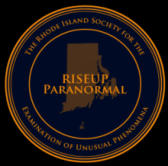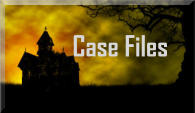HAYDON BRIDGE, NORTHUMBERLAND, U.K.
HISTORY
The first reference to an inn on the site was in 1422 when a certain John Parker was hanged for a felony in
the courtyard. In a letter from the Earl of Northumberland to Cardinal Wolsey in 1528, there is a reference to
the hanging of Jamys Noble - "He hadde commited dyverse and sundry, horrible and cruell crymes and was
hanged up in cheynes upon a pair of gallows."
Part of the Anchor originally formed part of the courthouse of "the Leet and Court Baron of the Barony of
Langley", the records date back to 1630. Langley Castle being a mere mile and a half away. Until the Jacobite
Rellion of 1715, most of the land and property in the area belonged to the Radcliffe family - the Earls of
Derwentwater.
James the third was executed for his part in the uprising and a stone cross near Langley Castle
commemorates the event. All land and property was confiscated and via the Admiralty was entrusted to
Greenwich Hospital to administer. About 1756, the name of the hostelry was changed to The Anchor" because
of the link to the Admiralty. At this time it was reported that "the courthouse South side of the river had
appended to them a commodius inn" built by the commissioners of Greenwich Hospital. The Admirals house,
now incorporated within the hotel was built for "the accomodation of receivers of its revenues when here on
business".
The inn then became a busy coaching inn because of its midway position between Newcastle and Carlisle.
The inn was the original meeting place for the Haydon Hunt (see later in the article), formed in 1812 and
understood to be the oldest hunt in Northumberland.
Ned Coulson, a native of Kenya, was a clock maker by trade. He had followed his father into that line of
work, but had a very odd, yet mischevious pastime. It was said he could pop a finger into his mouth and
replicate exactly the sound of a pistol firing. He would sit at the Anchor Inn and startle travelers who would
wander inside seeking lodging or food or drink. many would leave wet with perspiration after becoming Ned's
latest "victim". Ned was also said to be extremely fleet of foot and is reported to have beaten a horse in a
race. Such is the long line of characters and diversions that have surrounded this venerable establishment
through the centuries it has been in existence.
Situated on the Bridge of Haydon Bridge (which originally dates back to the 1300's), the Anchor Hotel is a
building steeped in history and it has been a hotel in various guises for many years. Originating as a Jacobite
Cross relating to medieval settlements, the Roman occupation and Jacobite revolutions, the Hotel was also
once a court house complete with hanging facilities outside in what is now the car park and garden. The
Haydon Bridge itself was destroyed in 1773 by a great flood from the River Tyne.
Haydon Bridge, Haydon, Northumberland England, United Kingdom
The Anchor was easily the center of village activities, including those with legal ramifications attached. On
August 3, 1867, a man named Thomas Pattinson found what appeared to be a casket in the crevice of a rock,
the casket had a spring lid and when opened, revealed it's contents: sixty-three coins, three gold and the rest
silver. It was determined these were Roman coins deposited there around or about the year 120. Pattison
imagined their worth as being about 1,000 pounds and decided to travel the countryside displaying them as
curiosities. The Duke of Northumberland who was Baron of Work claimed them as he own and demanded
delivery of the items. A writ of inquiry for damages from the Queen's Bench against Pattinson was executed at
the Anchor Hotel (which was the court house of the barony complete with gallows facilities) before the Under-
Sheriff of Northumberland and a jury. An independent assessor estimated the value of the coins at 18 pounds
and the Duke was awarded that in damages.
The Anchor saw it's share of tragedies as one can imagine. A young man named John Thompson who was
an ostler, or stableman, at the Anchor lost his life in the Wansbeck River on the night of November 14, 1852.
His body was found on March 2, 1853 - fifteen weeks later.
There is a gruesome legend connected with the old church at Haydon Bridge (below), given in detail in
William Lee's Haydon Bridge and District. It is the old story of the girl who longed for finery which she could
not afford. Watching the local tailor making a coat for her master at Altonside Farm, the girl pestered the tailor
so much that at length he made a bargain with her. If she would go to the old church at Haydon at midnight
and bring back the communion book from the altar, he would make her a coat which would enhance her
charms in the eyes of her lover. Accordingly, the girl carried out her share of the bargain, but, as she was
leaving the church, she heard voices, and hiding behind the door she saw two men dragging what appeared
to be a woman's body into the church and burying it under the flagstones. Running out of the church towards
her home, the girl tripped and fell, and on recovering herself she saw by the light of the moon that she had
tripped over what is described in the story as a "bow arrow", which she recognized as belonging to her lover!
The next night when he came to visit her she showed him the incriminating evidence, at which he trembled
like "an aspen leaf" and dramatically said "I bid you farewell, a long farewell". So the girl gained a new coat
but lost her lover.
In 2009, the hotel celebrated hosting the 200th anniversary of the Haydon Hunt, a traditional fox hunt and
one of the oldest such events in the U.K. The hunt began at the hotel in 1809. Today the Anchor is a wonderful
bridge between modern amenities and old world traditions. The menu at the Anchor offers a quality selection
of British dishes lovingly made with locally sourced ingredients. The extensive menu offers 3 course meals as
well as lighter snacks and sharing platters washed down with hand pulled ales, beers and lagers spirits or a
glass of wine. A cozy bar and lounge along with an alfresco dining and gathering area accents the comforts of
the establishment.
Haydon Bridge is also home to Langley Castle (below right). Built in 1350, during the reign of Edward III,
the castle has retained its architectural integrity and is regarded as one of the few medieval fortified Castle
Hotels in England. Over the past 600 years, the Castle has been owned, together with its estate, by Lords and
Ladies whose names were frequently associated with the turbulent history of the Kingdom. The land where
Langley Castle now stands used to be the seat of the Barons of Tynedale in the 12th century. The house
eventually passed to the Lucy family by virtue of marriage. Sir Thomas de Lucy fought for King Edward III in
the 1346 battles of Crecy and Neville's Cross. The money he made from fighting in these two battles enabled
him to convert the existing manor house into a castle.
Gazing at the mighty castle walls one could well
imagine what a formidable military structure it must have
been in its heyday. During the medieval period Langley
Castle, perhaps inevitably, found itself embroiled in the
North’s turbulent politics. In 1405, the fortress was
attacked by King Henry IV who was fighting the Percy
family. The 14th and 15th centuries were turbulent times
for the north of England. The Scots carried out frequent
raids in Northumberland and the need for fortified
accommodation was great. But it was not only the Scots
who were causing problems in the area. Thomas'
daughter, Maud, married Henry Percy, the first Earl of
Northumberland, and in 1368 the castle became Percy
property. The Percy's had supported Edward III but had
switched allegiance to Henry Bolingbroke (later to
become Henry IV) in 1399.
This allegiance did not last and by 1403, the Percy
family was supporting Edmund Mortimer. Henry Percy supported Richard Scrope, the Archbishop of York, in
an unsuccessful rebellion against the king in 1405, after which he fled to Scotland. Langley Castle was gutted
by fire by the King's forces and shortly thereafter fell into ruins. Upon the death of the 9th Earl of
Northumberland in 1572, the barony of Langley was forfeited to the crown.
In 1632 the castle and surrounding lands were purchased by the Radcliffe family of Dilston who were Earls
of Derwentwater. For their part in the Jacobite uprisings, James, the 3rd Earl, and his brother Charles were
executed at the Tower of London. A nearby cross on the road from the castle to Haydon Bridge
commemorates their loyalty to the King of Scotland. It reads: "In memory of James and Charles Viscounts
Langley Beheaded on Tower Hill 24th Feb 1716 and 8th Dec 1746 For Loyalty to their Lawful Sovereign"
The castle and Derwentwater lands were taken by the crown and conferred on the Royal Naval Hospital at
Greenwich. Signs of the Admiralty's influence can still be seen in the area. For example the anchor motif on
the front of a house at Langley and the naming of The Anchor.
Langley remained in ruins until 1882 when it was bought by a local historian, Cadwallader Bates.The
restoration of the Castle to its original 14th Century structure became a life's work not only for Cadwallader,
but also for his wife Josephine, who continued his work after Cadwalladers death in 1902. Josephine rebuilt
the original chapel on the castle roof in memory of her husband and worked tirelessly until her own death in
1933.
She was buried alongside her husband in the castle grounds. The building was abandoned until World War II
when it was used as an army barracks After the war, until 1972, the castle served as St. Cuthbert's girl's
school. Dr. Stuart Madnick, an American professor at MIT, purchased Langley Castle in 1985 and it is now run
as a luxury hotel where one can enjoy 21st century comforts in a medieval surrounding.
HAUNTINGS
The only recorded incident at the Anchor Hotel remains one that was so profound, that it was featured on a
2000 episode of Scariest Places on Earth. In 1991, A home in the village of Haydon Bridge was said to be the
scene of a series of events concerning demonic forces. An exorcism was performed and it was believed the
banishment drove the evil spirit from the home.
In 1999, a family moved to Haydon Bridge unfettered by the tales of demonic possession. An Irish couple,
Elen McGannet and Elaine Burrows purchased the Anchor Hotel. After purchasing the hotel, they report there
were no incidents related to anything paranormal, but shortly thereafter that would change.
One night while watching TV, they saw a door open by itself followed by a hideous odor that also
manifested at the stop of the stairway to the second floor and linger there for a time, dissipate and then return.
The couple also had children living there and it was reported the youngest seemed to attract the attention
of a spirit. She began to see shadow figures moving about in the bedroom that clearly resembled that of a
living being (head and shoulders, etc). The sulfur-ish small that permeated the living quarters was deemed to
be a sign of something inhuman and so the couple sought the advise and assistance of paranormal experts.
Among those called in were famed demonologists Ed and Lorraine Warren (below) and Rev. Charles
Morton a minister with the local Spiritualists Union Church. Ed Warren claimed there experiences were due to
what is commonly called “The Stone Tape Theory” wherein energy released during a traumatic and ultimately
fatal event is somehow trapped in the surrounding materials. In this case, the granite that comprised the hotel.
“Stone is like a microchip”, Ed claims. “It holds in the vibrations of the people who used to live here.”
Also attending was UK paranormal researcher Archie Lawrie (below), who lauded the family for doing the
right thing in moving the children out of the home temporarily. McGannet claimed that one night while staying
in his son’s room while the boy slept, he watched a shadowy figure pass between them and felt the room go
icy cold.
Lorraine was convinced that something outside the realm of human
involvement was present in the form of a small child while Morton reported
receiving impressions of something “oppressive”. Based on the history of the
location, they went on to suspect the activity was tied in to the hotel’s prior
history as a courthouse.
The courthouse was located in what is now the dining room and the
gallows were constructed in the current parking lot area. The owners were
aware of two hangings but conceded there were “probably more” while
Morton painted a grotesque picture of those being hung also being
decapitated. Ed Warren ventured that hanging victims often would “curse”
their hangmen, suggesting that might be a part of the problem.
The group sat down and confronted the demonic spirit and this was
filmed by Fox Family network for the show. Later, after they turned in for the
night, at 3:13 am, when she was lying in bed, Lorraine claimed she could feel something touching her arm and
pressing against the covers. It was here that Ed claimed the time was significant because in his words, 3 am
is the “Devil’s hour” and the number three is often involved in such events because it is considered an insult to
the Holy Trinity. He then claimed what they had encountered was extremely evil and had to be subjected to
the Rites of Exorcism in order eliminate it.
At this point the ritual took place along with a house blessing performed by Ed who claimed he rarely did
such things, but he felt this was an emergency. Rev. Morton, who apparently also had mediumship abilities
attempted to channel benign and friendly spirit during the exorcism to aid in the banishing.
The exorcism was deemed a success.






ANCHOR HOTEL



























